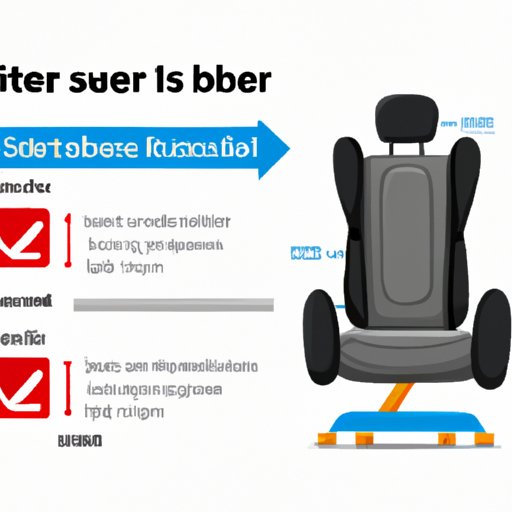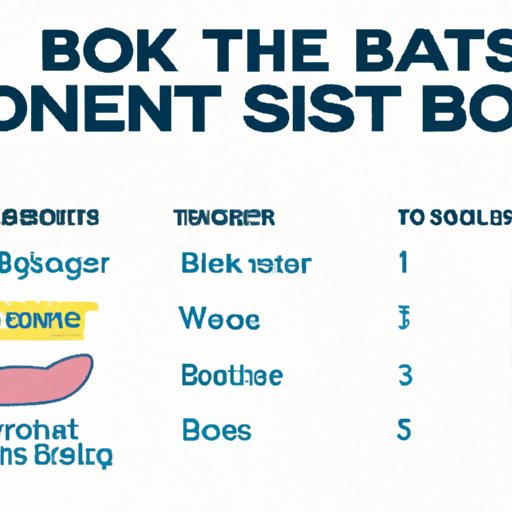
Introduction
As parents, keeping our children safe is always a top priority. When it comes to traveling in a car, we rely on seatbelts, car seats, and booster seats to keep our children secure. Booster seats play a vital role in child safety and proper use of such seats could save hundreds of lives each year. In this article, we will explore the importance of height and weight in booster seat selection, how to measure your child’s height and weight, how to choose the right booster seat, and important safety guidelines around installation and use.
Why Proper Height and Weight Limits Matter for Booster Seats
According to the National Highway Traffic Safety Administration (NHTSA), car accidents are a leading cause of death for children under the age of 13. Luckily, the use of properly fitting booster seats could reduce the risk of injury in an accident by up to 45%. Unfortunately, many parents either do not use a booster seat at all or use one that is not the appropriate size for their child.
It is important for parents to understand that seat belts in cars are designed for adults. When children are too small to properly fit into a seat belt, the seat belt can cause serious and even fatal injuries in the event of a car accident. Booster seats raise your child’s seating position so that a seat belt fits them properly.
How to Measure Your Child’s Height and Weight
Before choosing a booster seat, it is important to measure your child’s height and weight. This will help you determine the appropriate size and type of booster seat for your child. Here are some tips to accurately measure your child’s height and weight:
– Use a reliable and accurate scale to measure weight.
– Have your child stand against a wall and use a tape measure to determine their height. Make sure they stand up straight and do not wear shoes.
– If your child is wiggly or uncooperative, try to get their height and weight several times over a few days to get a more accurate average.
Different Types of Booster Seats
Booster seats are available in two main types: combination seats and backless booster seats. Combination seats are convertible and can function as both a car seat and a booster seat. Backless booster seats are small seats that lift your child’s seating position and help a regular seat belt fit them better. Here’s a rundown of the different types:
– Combination Booster Seats: Combination booster seats are ideal for younger children. These convertible seats may come with a harness and use the car’s seat belt to hold the child. Combination seats are suitable for kids weighing between 20-65 pounds.
– Backless Booster Seats: Backless booster seats do not have a backrest but compensate for it by elevating the child’s seating position. These booster seats are good for kids who weigh 40-100 pounds.
How to Know When to Switch Your Child to a Booster Seat
The decision to switch from a car seat to a booster seat depends on your child’s age, height, and weight. A child should remain in a five-point harness car seat until they are at least 4 years old. Once the child outgrows their current car seat, they should switch to a booster seat.
The American Academy of Pediatrics (AAP) recommends that children should be in a belt-positioning booster seat until they are 4 feet, 9 inches and weighing between 80-100 pounds. If you are unsure of whether your child is ready for a booster seat, consult a certified Child Passenger Safety Technician. They can provide you with advice on which type of booster seat is right for your child.
Top-Rated Booster Seats According to Height and Weight
There are plenty of booster seats available in the market, making it tricky to find the right one for your child. Here are some of the best booster seats you can choose from based on your child’s height and weight:
– Graco Nautilus 65 3-in-1 Harness Booster Seat: Ideal for children weighing between 22-65 pounds and 27-49 inches tall.
– Evenflo Big Kid Booster Seat: Suitable for children weighing between 40-100 pounds and 38-57 inches tall.
– Cybex Solution X-Fix: Recommended for children weighing between 33-110 pounds and between 38-60 inches tall.
Proper Installation of Booster Seats
Proper installation of a booster seat is key to ensuring your child is safe in the car. Follow these steps:
– Read the booster seat manufacturer’s instructions before installation.
– Make sure the seat belt goes through the proper path, either through the slots in the booster or through the back of the booster.
– Check the tightness by trying to move the booster seat from side to side. It should not move more than one inch in any direction.

Booster Seat Regulations and Guidelines
Booster seat regulations differ from state to state. Most states require that children use a booster seat until they are at least 8 years old while some states have specific height and weight requirements. Check the regulations in your state and make sure you follow them. The NHTSA recommends that children should remain in a booster seat until they are 4 feet, 9 inches.
Helping Your Child Adjust to a Booster Seat
Transitioning your child from a car seat to a booster seat can be challenging. Here are some tips to ensure the transition is as smooth as possible:
– Involve your child in the process of picking out the booster seat and explain why it is needed.
– Let your child practice sitting on the booster seat before actually using it in the car.
– Make sure the booster seat is comfortable. You can add cushions and covers to improve its comfort factor.
Conclusion
Choosing the appropriate booster seat for your child is important as it can significantly reduce the risk of injury and death in an accident. Proper installation, following the manufacturer’s instructions, and following state regulations will further ensure your child’s safety. Remember, a child should remain in a booster seat until they reach the appropriate height and weight limits.
As a parent, it is our responsibility to ensure that our little ones stay safe at all times. A booster seat that is properly installed and fits your child properly is a crucial element to protect them during car trips. With a booster seat, parents can be confident about their child’s safety in the car.




